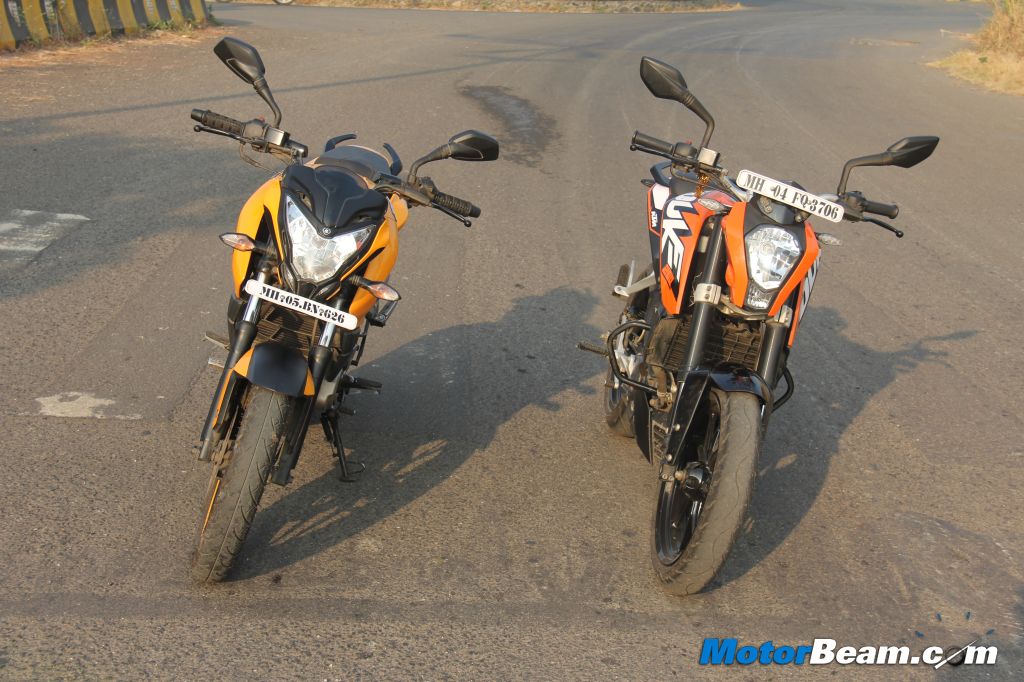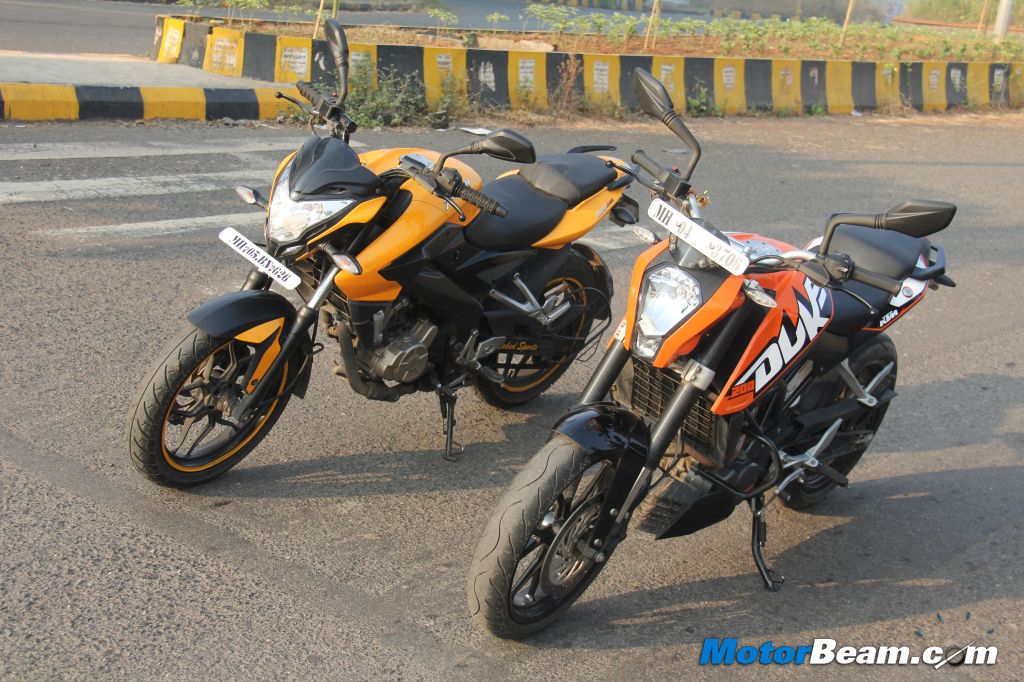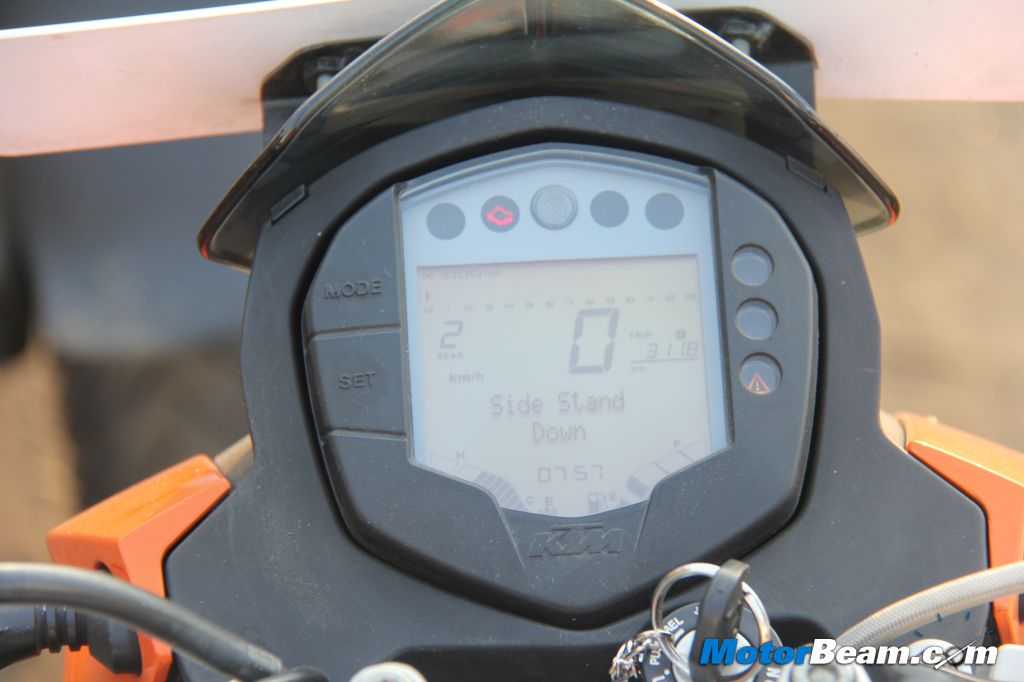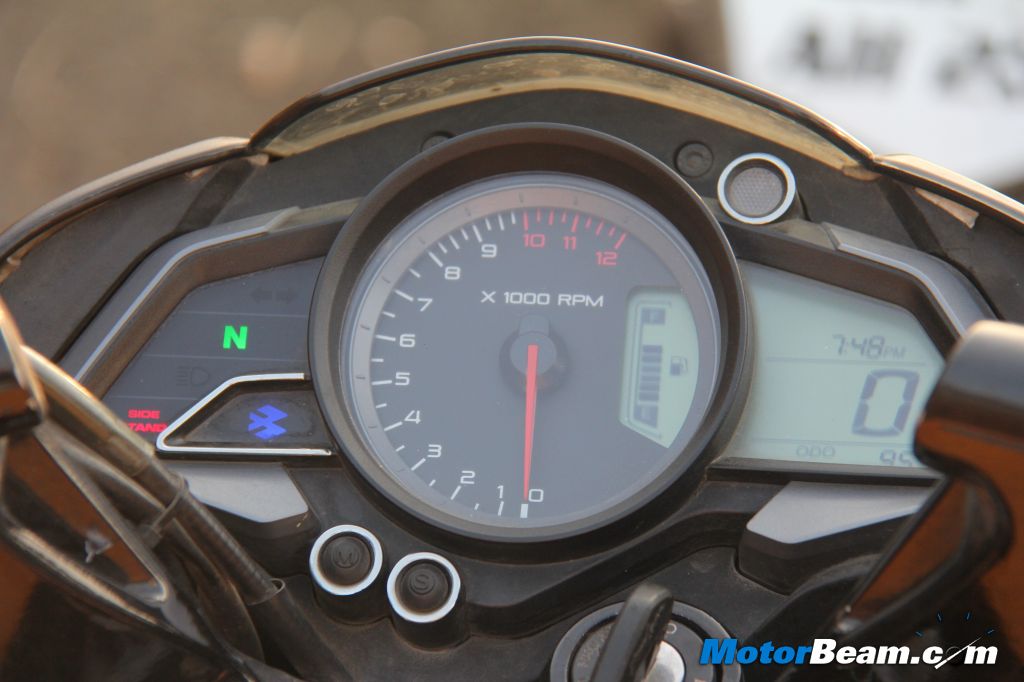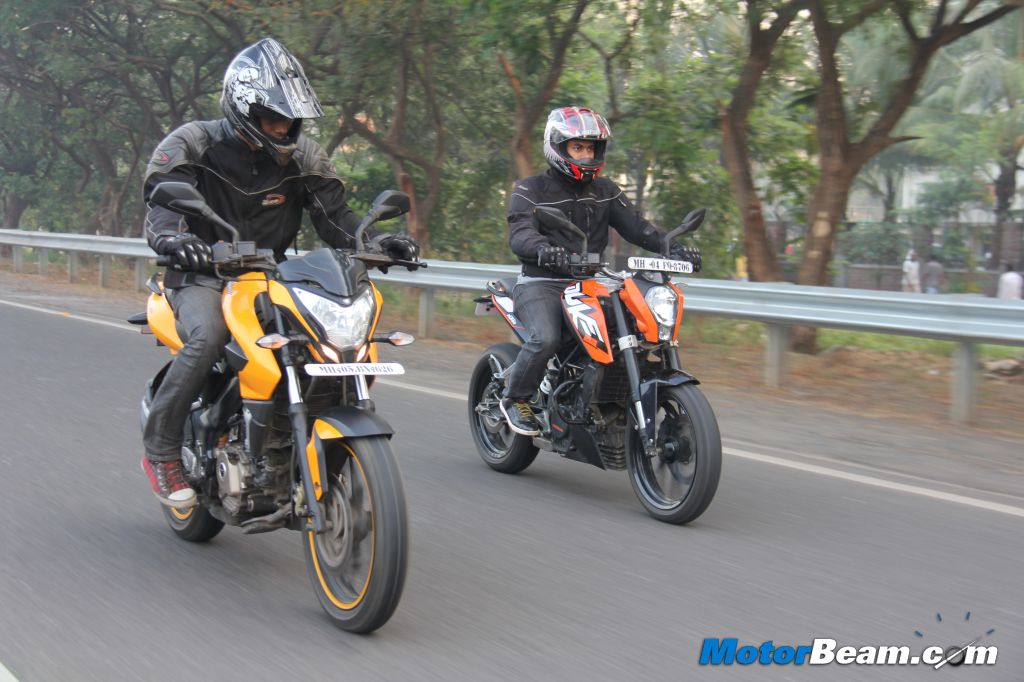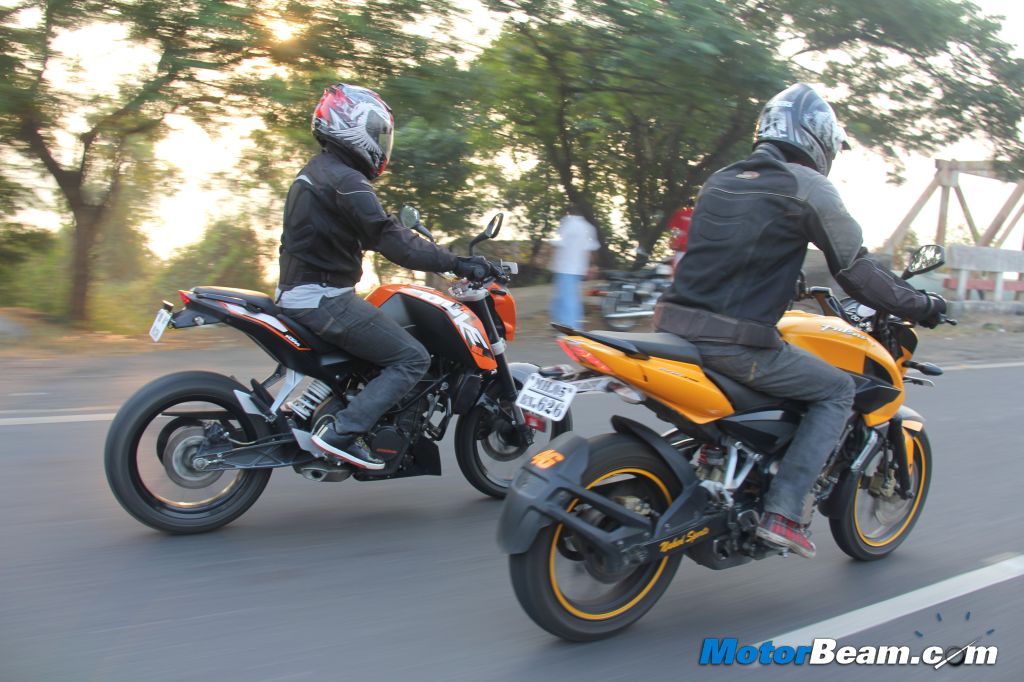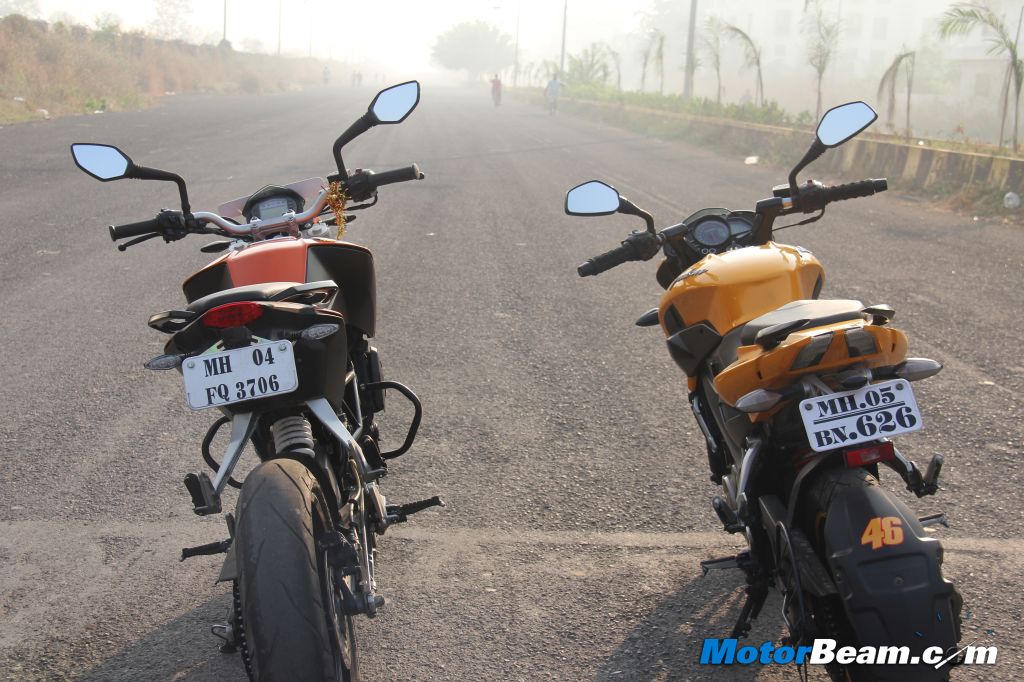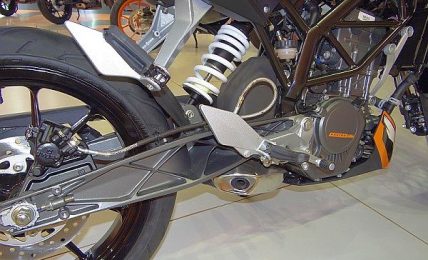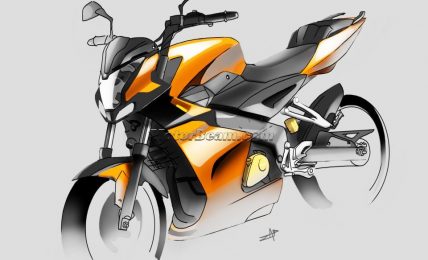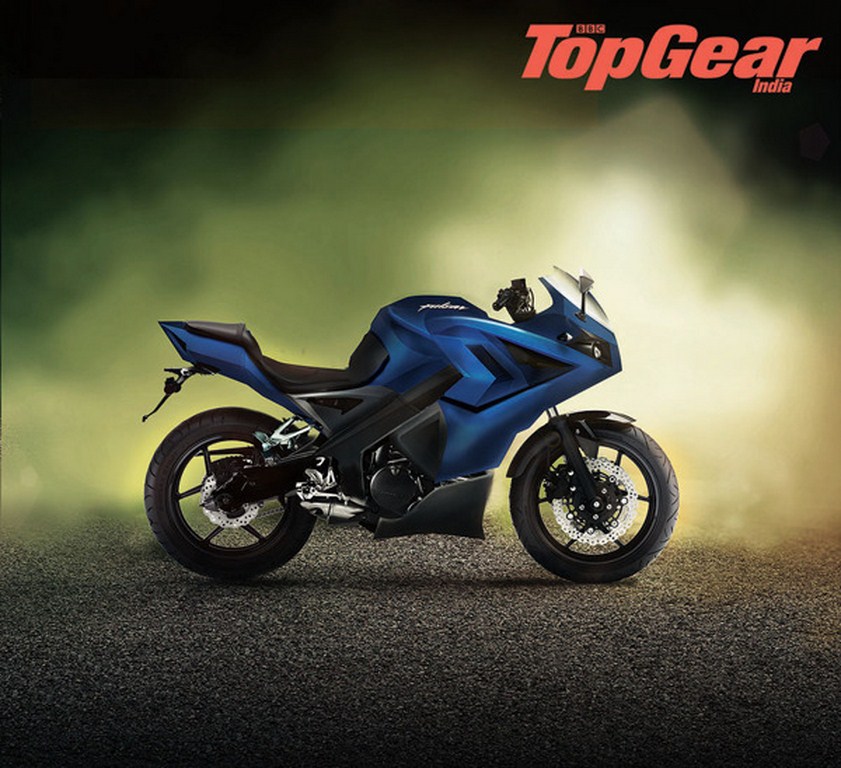Shootout – KTM Duke 200 vs Pulsar 200 NS
Both the KTM Duke 200 and Pulsar 200 NS offer so much fun, you simply can’t go wrong with either.
The Bajaj Pulsar needs absolutely no introduction, its one of the most popular bike brands to have ever gone on sale in India. The latest iteration of the Pulsar, the 200 NS is a massive leap for Bajaj Auto. But this leap doesn’t come so easily. The Pulsar 200 NS inherits many parts and styling cues from the KTM Duke 200. Bajaj Auto owns around 47% stake in KTM and also manufactures the Duke 200 for the Austrian company. Both the Duke 200 and Pulsar 200 NS are very similar machines – both bikes are naked street-fighters using similar engines and offering a total racket for your money’s worth!
Styling – Both the Bajaj Pulsar 200 NS and KTM Duke 200 follow a similar styling direction. Both bikes have muscular tanks, raised rear seats, underbelly exhausts and exposed body parts. The Duke 200’s attention to detail and color layout makes it more eye catchy on the road. You simply can’t miss this KTM when its around. From the alien headlight to the massive rear tyre, the Duke 200 is pure visual delight. The Pulsar 200 NS is not far behind and looks striking at the front and side. The rear number plate mount and smart alloy-wheels really stand out but the mundane looking tail section reminds you of old Pulsars!
Instrument Cluster and Switch Gear – The Pulsar 200 NS gets an all new instrument cluster, which is extremely easy to read. The analog tachometer takes centre stage while the digital speedometer is positioned on the right and carries quite a bit of vital information. There is a shift light too and the console is very well designed. The Duke 200 carries an instrument cluster which is very KTM. This orange backlit console is not the easiest to read in sunny conditions but carries a plethora of information. The mode and set buttons are slightly hard though. With so much performance on tap, we would have loved an analogue tachometer, just like the Pulsar 200 NS.
Performance – Both these bikes are powered by 199.5cc, single-cylinder, 4-valve, liquid-cooled engines, with identical bore and stroke. The Pulsar 200 NS employs triple spark plugs, SOHC and a carburetor, resulting in a peak power output of 23.17 BHP at 9500 RPM and a peak torque output of 18.3 Nm of torque at 8000 RPM. The Duke 200 employs just a single spark plug and uses DOHC along with fuel injection for a slightly higher power output of 25 BHP at 10,000 RPM and 19.2 Nm of torque at 8000 RPM. Both bikes are mated to smooth shifting 6-speed transmissions. Both these machines have a very revv-happy engine which is always ready to rush to the redline. While the Duke 200 is almost vibration free at any point of the powerband, the Pulsar 200 NS does show a hint of vibration.
[youtube:http://www.youtube.com/watch?v=e6u_2wwxvls 540 375]
The Duke 200 has very short gearing, which makes it a complete racket right from the word go. Acceleration is immediate and completely ballistic, with the Duke rushing to its redline with utmost zest. So quick is the Duke 200 to reach its redline, that you are often rudely welcomed by the revv-limiter at 10,500 RPM. The Pulsar 200 NS has slightly taller gearing, which enables you to time your shifts without being caught abruptly by the revv-limiter. The 200 NS is not far behind in acceleration but the Duke 200’s lighter body further accentuates its power to weight ratio, making it the quicker bike of the two. The Duke 200 is almost half a second quicker to 100 km/hr and both bikes will hit triple digit speeds is less than 10 seconds. The Pulsar 200 NS somehow manages to have a higher top speed though. It is also slightly more frugal.
Riding Dynamics – The Duke 200 and Pulsar 200 NS possess very strong dynamics. The Duke 200 does edge ahead of the Pulsar 200 NS thanks to top notch hardware. While both bikes use a rear monoshock, the Duke 200 uses upside-down forks at the front and a trellis frame, while the Pulsar 200 NS uses telescopic forks and a perimeter frame. The Duke also boasts of wider handle bars, wider rear tyre and braided hose lines. This results in the Duke 200 being the sharper handler of the two, cutting through corners like a sharp knife does through butter.
The Pulsar 200 NS is splendid through corners too and inspires tremendous confidence to enable the rider to push hard. This splendid handling can be attributed to the 50:50 weight distribution. Both bikes are slightly on the stiffer side but the Pulsar 200 NS is more comfortable of the two. Even though the Duke 200 has a bigger disc brake at the front (300 mm vs 280 mm), the Pulsar’s petal discs offer better bite.
Verdict – The KTM Duke 200 and Bajaj Pulsar 200 NS are two bikes which are similar in many aspects. Both offer splendid performance, sharp handling, good brakes and an absolutely bang for your buck pricing. The Duke 200’s Rs. 1.51 lakh price is 50% more than the Pulsar 200 NS’ Rs. 1.02 lakh price (on-road, Mumbai). While the Duke 200 offers way superior hardware, the Pulsar 200 NS offers almost similar levels of thrills at a much cheaper cost. Choosing one amongst them is not at all a difficult job. If your budget permits, the KTM Duke 200 is worth the extra moolah, but the Pulsar 200 NS will still keep your adrenaline running high, making both these machines an absolutely joy to ride.
If you want a fast yet affordable motorcycle, both the Pulsar 200 NS and Duke 200 fit the bill. Entertaining performance and precise handling makes these maniac machines extremely desirable.
Further Reading –
KTM Duke 200 Review
Bajaj Pulsar 200 NS Review
KTM Duke 200 vs Yamaha R15 V2 vs Honda CBR250R


